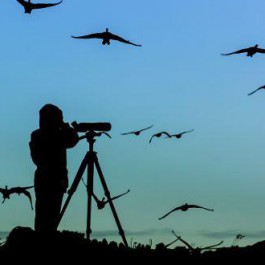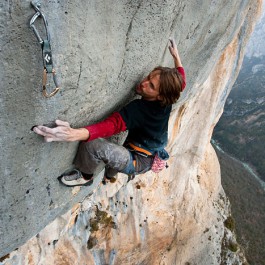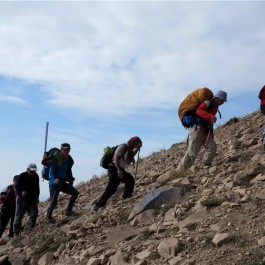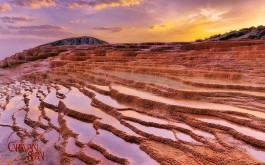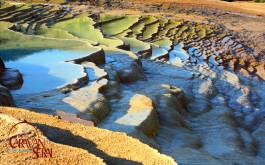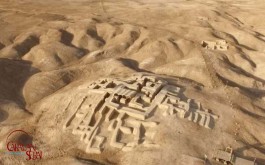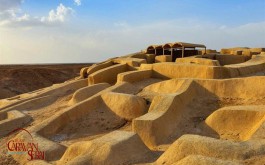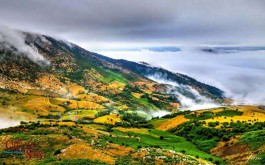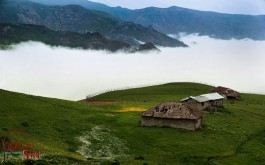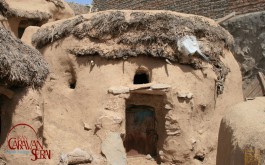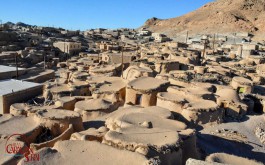Iran is a country with thousands years political, cultural, natural and historical background. Finding a touristy destination among Iran's attractions is a difficult task since there are thousands of must-visit places. You can travel to all of these scenic locations by booking Iranian tours and enjoy your trip.
In this part, some spectacular places and touristy attractions are introduced to be discovered by our dear tourists.
Makhunik Village
Makhunik Village is one of the ten bizarre villages in Iran that captivates the attention of many researchers and travelers and highly acclaimed by them because of its unique biological, ethnic and cultural characteristics. Makhunik is located in the easternmost part of Iran, in Sarbishe County. This village is 143 kilometers away from Birjand, the center of South Khorasan province, on Iran's border with Afghanistan. Regarding the most valid documents date back to 300 years ago, and the village elders' claim, it is concluded that the old name of Makhunik was Maadkhunik which is composed of the two words: "Maad" and "Khunik". Maad is the name of an Aryan ethnicity and Khunik means a cool and cold place; in general, Maadkhunik means a cold place where Maad ethnicity had resided. Short height is the significant feature of the villagers as their medium height is between 80 to 120 centimeters. Hence, this village is known as Lilliput Land. The architecture of houses is another unique characteristic of Makhunik village. On the contrary to normal houses, Makhunik houses are built under ground and sometimes their roof is at the same level as the ground. Roofs are made by mud or thorns and wood shavings. These houses do not have a particular shape; hence, they form like the irregular surface of the built area. The ceilings of the houses are short which are approximately situated one meter down the earth. More than a half of the house body is underground with thick walls which result in cool summers and warm winters. In general, the majority of these houses' areas are 12 to16 meters and their maximum height reaches to 1.60 meters. Currently, many domestic and foreigner tourists visit this village and it is considered as one of the tourism destinations in South Khorasan Province.
Subatan
Imagine the green pastures where wild horses grazing within. Wooden cottages with their chimneys emitting the fireplace smoke and the breeze makes poppy flowers to dance. Is it possible to gather all these beauties at the same place? The answer is positive. All these perspectives are gathered in Subatan. In addition, affectionate people with very attractive and delicious foods are the other features of Subatan.
Subatan yaylak is located in the beautiful province of Gilan and in a 20 kilometers distance of west Lisar. This piece of paradise is surrounded by the other paradises, as the roaring river of Lisar is situated in its north and it reaches to the beautiful Neor lake and yaylak of Ardebil in the west. Asbomar is a yaylak in the south of Subatan, and Talysh forests are in the east.
Shahr-e Sukhteh
Shahr-e Sukhteh is located in a distance of 55 kilometers to Zabol city in Sistan and Balouchestan province next to Zabol- Zahedan road. This city was founded 3200 BC and its residents had lived there in four periods between the years 3200 to 1800 BC.
Civilization of Shahr-e Sukhteh is one of the ancient world's wonders. This city was the most important deployment center; indeed, it was the capital of the region in Bronze Age.
Shahr-e Sukhteh seems to be a new name and does not have a valuable history. Based on the existing valid documents, this name dates back to more than 150 years ago. Shahr-e Sukhte was burned twice; once on its initial growth and the second time on its destruction.
This city was founded on 3200 BC which had been abandoned on 1800 BC, approximately. Life was going on for a period of 1400 years. The flourishing era of this civilization was between 2500 to 2200 BC and this city had a population of 55000 people. The two main groups of farmers and artisans consisted the majority of the population.
Building of the burned palace and also houses built on each other are the most significant architecture remnants that were discovered in Shahr-e Sukhte. Every building unit was composed of a rectangular part including 5 to 6 rooms with an area of 150 to 160 square meters. Additionally, houses were in complexes composed of 4 to 6 houses.
Badab-e Surt
Mineral water springs of Badab-e Surt is a spectacular complex and one of the most amazing masterpiece of nature. These springs are located in a 7 kilometers distance to west of Badeleh village and at an elevation of 1840 meters in Sari. Surt mysterious springs including two springs with two different natures in terms of color, smell and taste. One of the springs has saline water which is beneficial for waist and legs pains, rheumatism and skin care. The other spring situated next to the first one, is a permanent spring which has a kind of water with orange color and a bit sour taste. During thousands years, sedimentary water of these springs, flowing from the top of the mountain to the bottom, have created dozens of beautiful ponds in different sizes with orange, yellow and red color.
Mineral water springs of Badab-e Surt with Damavand Mountain and Sarv-e Abarkuh are registered as the national natural works. There are only six countries in the world that have a phenomenon similar to these springs. Moreover, after Pamukkale spring in Turkey, these springs are the second saline water springs in the world which are globally registered.
